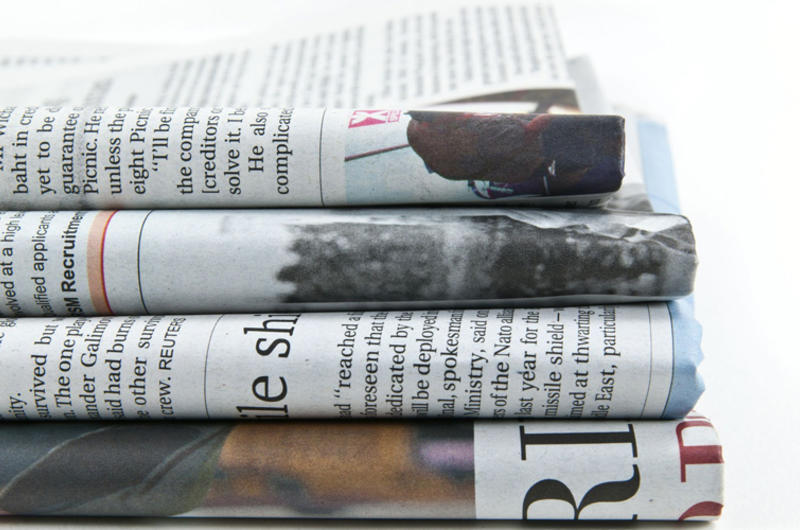

This website was created and maintained from May 2020 to May 2021 to commemorate the 75th anniversary of Stars and Stripes operations in the Pacific.
It will no longer be updated, but we encourage you to explore the site and view content we felt best illustrated Stars and Stripes' continued support of the Pacific theater since 1945.
East, West meet on Freedom Road job

File photo
By JIM MORRISSEY | Stars and Stripes April 14, 1953
PANMUNJOM, Korea, Apr. 15 — Panmunjom, the little village where East meets West every day to try and iron out their differences, became a scene of vivid contrast this week as men from both sides of the world worked long hours to finish the last link of Freedom highway.
The highway, which leads from Kaesong and points north to Munsan and the capitals of the 19 United Nations with fighting men in Korea, will soon be the road back home for more than 6,000 Allied and Communist sick and wounded captured personnel.
THREE WEEKS AGO this narrow strip of dusty highway was the path to a conference site where men with vastly different ideologies had met for many months to try and settle the Korean war. They never got to that, but last week they reached an agreement that put Panmunjom back on the map. They agreed to exchange the sick and wounded.
The quiet conference site needed a face-lifting. Hours before the agreement was signed, Army engineers moved into the area with their shovels, bulldozers, and trucks. Part of the road leading to the Allied exchange depots had been cut between two flooded rice paddies by the time the ink was dry on the agreement.
BY THE NEXT morning both sides were out in force. On the southeast end of the conference area three bulldozers, a power shovel, and scores of five-ton trucks carved a wide road throughout the lowlands.
Men from the 14th Engineer Battalion worked 12 hours a day to get the road built as quickly as possible. They were working on the Communist side of the area, too. Standing almost shoulder to shoulder, North Korean and Chinese soldiers were patiently moving the earth with shovels and picks.
THEIR DUMP trucks were wide strips of burlap suspended on the straining shoulders of the laborers by two wooden poles. It was a slow, painstaking job, but they, too, were racing against time.
Along about noon they took a break. Part of them fell into a formation, did a lethargic right-shoulder-shovels, and marched up the road to chow.
Others stayed behind for a cigarette break. They were still wearing their quilted white winter uniforms. Most of them sported red shoulder boards with yellow stripes signifying their rank. One didn't have any rank, but he was wearing a large silver star on a red background.
SOMETIMES THEY have a community sing during these breaks. One or two of them are usually singing all the time they are working.
On the other side of the road, while the pick and shovel crews went slowly about their work, an American soldier heaped tons of dirt into a soggy culvert.
A few yards away, a group of his buddies wired pieces of drainpipe together. Ten feet from them was a sign reading "No United Nations personnel beyond this point." Two Korean guards, with cradled burp guns, emphasized the meaning of the sign.
AT THE OTHER end of the neutral zone, a helicopter zoomed over the U.N. exchange point to test a new landing deck built on a soggy rice paddy. On a high spot near the landing deck, engineers placed together frames of wooden floors for seven squad tents.
"We will have it all wound up by Tuesday night," said Maj. John Agnew, Arlington, Va., who was bossing the project.
"There was nothing but rice paddies here Saturday when we started, but now we will be able to handle our men as soon as they are released."
The last link o£ Freedom highway is a tribute to modern engineering. It's wide and smooth with drainage ditches on both sides. Four days ago it was just a dike between two paddies.
IT'S HOT and dry at Panmunjom now, but there will be little dust on Freedom highway during Operation Little Switch. They've covered it with calcium chloride crystals which will draw moisture out of the air and settle the dust.
It will be a fast, comfortable trip back from Panmunjom. One of the most welcome sights will be Freedom Gate bridge, which spans the Imjin river. When they cross it, they will be back behind friendly lines.
The river will be doubly beautiful to the 600 Allied fighting men who will cross it next week. Its swiftly flowing green water reflects the nearby hills like the streams they used to fish in at home.
And they will be on their way home.


